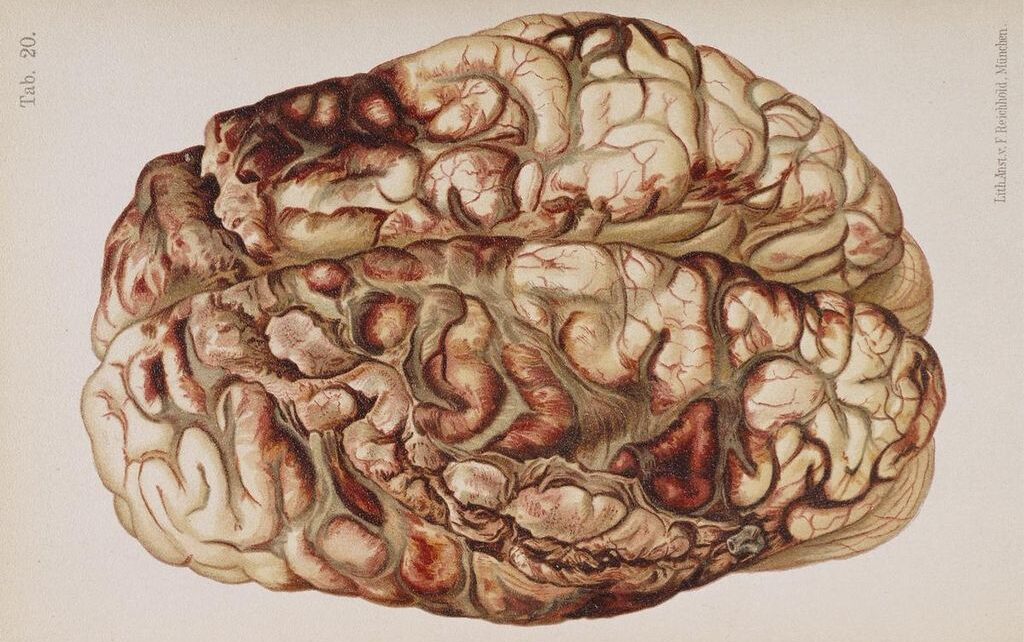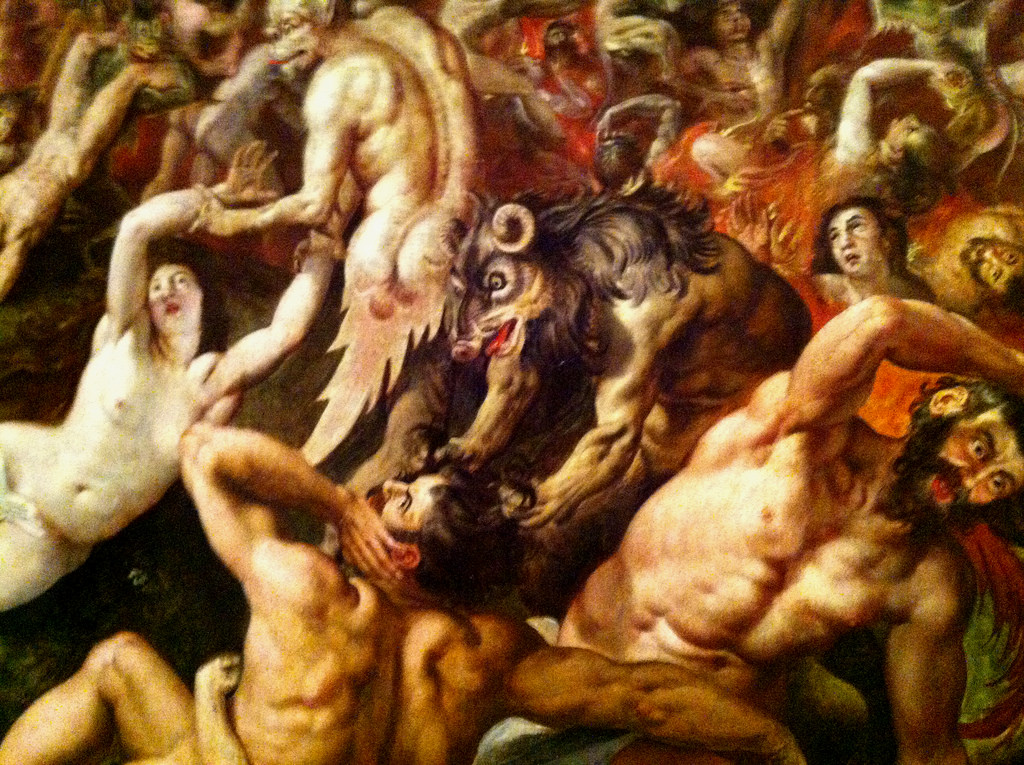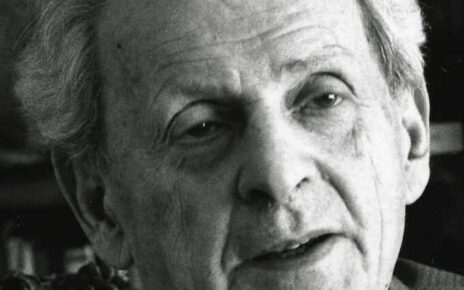The following is the first of a two part series. The entire article appears in Issue 22.1 of the Journal for Cultural and Religious Theory.
Collage from “An-Other Language? Psychosomatic Research and the Lévinasian Conception of Otherness in Trauma Therapy” with the research question: When Lévinas claims that „the relationship between the Same and the Other is language“ in Totality and Infinity, what is meant by the Same, what is meant by the Other, what is meant by Relationship? And how can the findings (psychosomatics of Lévinas’ ethics) be connected/applied to enhance Trauma Therapy?[1]
In this contribution, I will focus on the findings, meaning the psychosomatics of Lévinas’ Ethics, and how they are connected to trauma (therapy). First, trauma will be defined. Then, aspects of Lévinas’ theory elucidated. Then, trauma in Lévinas’ theory identified. Afterwards, psychosomatics will be defined, and embodied cognition — and with that, a top-down approach to trauma treatment introduced that is about the engagement with text as a ubstantial ‘encounter’ than may be usually thought.
There are three foci in this article: trauma, Lévinas‘ writing, and embodiment. Over the course of the text at hand, theembodiment of trauma, also through written text, is explored. The argument is: First, Lévinas develops an ethics of alterity at the basis of his own traumas (the experiences and consequences of World War II). Second, reading Lévinas‘ theory is a kind of embodied encounter. This can contribute to an understanding of how to engage with and be around traumatised subjects. If philosophy around trauma and a lived ethics of alterity has immediate psychosomatic effects on the reader, then philosophy and its impact can potentially be understood in a new light as well, also when it comes to trauma work.
For now, lets keep in mind that for Lévinas, trauma is Otherness. — but also something beautiful if an Openness is given. An Openness to the Infinite, to the Unknown. This Openness is an ethical attitude that can be summarised with ‘hineni’. It is a way of meeting each other in a completely impartial way (which often is difficult if one is dissociated as it is the mind solely that speaks to oneself. If however, we consider the mind-body-connection as well, then the body is brought into focus, too — and also the effects that a philosophical text may have that are not solely cognitive.
Trauma in Emmanuel Lévinas‘ Writing Body
Contrary to what may be commonly thought, the discipline of philosophy — in which this thesis is written in and what it aims to prove — can as philosophical practice be embedded in our common lifeworlds. Rather than building an ivory tower (which philosophy and other humanities is and are commonly blamed for), it can actually aid to map out the inner architecture of emotions and their consequences that define our lived human experience. It is not just rational thinking, but emotional labour. This is demonstrated by considering a specific human experience: the traumatic moment.
Here, “we are affected” and the question posed is “how we live out that affect.”[2] Not just how each of us lives it out in actuality, but we can ask philosophically how it may be lived out ideally — under ideal circumstances (what these circumstances may be) — Lévinas is an example of a philosopher that through writing lived out his affect and perhaps transformed it into a theory useful for trauma work. Considering this may enhance psychological care taking as part of a medical practice with trauma patients.[3] Simply put: it may enhance the quality of trauma therapy offered. How? It can provide a work ethic. As said, this may aid in dealing with trauma patients, and thus (their) dealing with (their) traumatisation(s). Given that the therapist reads and engages with the project at hand. It can also offer another perspective on text where words have a socio-somatic effect and thus text is considered to have a potential for healing trauma. At first, it may seem contradictory because trauma work is mostly body-focused and of course text is not. However, with recent findings on embodied cognition, text is considered corporeal too.
The latter point will be in focus alongside Lévinas’ ethics of Alterity that he begins to develop in Totality and Infinity. Here is the structure:
- Trauma (etymology, definitions, consequences)
- Aspects of Lévinas’ Ethics (Alterity/Otherness, the Ethical Relation as Language, Hineni)
- Identifying Trauma in Lévinas’ Ethics at hand (dissociation in Otherness, the non-relation, focusing on the bodily encounter as well as being present with hineni)
- On the Psychosomatics of Lévinas’ Ethics (Psychosomatics, Embodied Cognition)
Trauma (etymology, definitions, consequences)
At the core of my research lies trauma — derived from the Greek noun τραῦμα (trauma), translated from Latin to “wound”, “hurt”, “defeat”. Since 1894 there is also this sense of “psychic wound, unpleasant experience which causes abnormal stress.”[4] Then there is from the 1650s onwards the adjective traumatic, from French traumatique and directly from Late Latin traumaticus, from Greek traumatikos “pertaining to a wound,” and the verb traumatise or traumatised since 1893 in a physical and since 1949 in a psychological sense. The psychological sense will be elucidated down below in order to understand the trauma of the holocaust, and the necessity of expressing it.[5] Herein lies a hope to add something valuable to the reappraisal of past trauma, in particular the trauma of the holocaust.
This is in focus because I am part of the third generation in Austria that has to deal with unresolved trauma from the post-WWII period, and have an interest in understanding because I am, too, affected. This thesis is a way of acknowledging that, and aiming at adding to the discussion table on the how of resolving trauma. It is a rather recent discussion due to the TTT (“Transgenerational Transmission of Trauma”).[6] Working with a Jewish thinker from that time — Lévinas is one of the survivors of this time as well as the holocaust — embedding the philosophy that comes from the immediate experience now in the current discussion and practice today is an attempt to locate myself and understand my generation’s situated-ness and the demands that may be tied to this. It is part of attempting to understand the human condition of being alive at this time; and facing that which is strange and Other in ourselves and in the world — so as to expand this understanding and also the possibility of empathising with others; which, in therapeutical work (but also any human encounter) is absolutely necessary.[7] We are in particular concerned with psychosomatic work that aims at relating to oneself again as well as to others as “dissociation” is “the essence of trauma.”[8]
Depersonalisation[9] is the core element of clinical categories which are considered to be trauma-related conditions, e.g. dissociative disorders, Borderline Personality Disorder, or Conversion Disorder.[10] We will focus on dissociative categories as the research focus lies on the expressability and graspability of the trauma in order to allow for a relation again. So, one of the consequences of experiencing a traumatic event is (embodied) dissociation. It cuts one off from the world as a way of protecting the integrity of the person. It is one of the defence mechanisms of the brain, a rather complex one. This means that one is not in touch anymore with their feelings, bodily sensations and needs. With the loss of “psychological energy,”[11] the person cannot regulate their own behaviour any longer. Pierre Janet, the leading researcher on psychological trauma, says that an émotion choc (“emotional shock”) occurs after trauma from which the consequences can spiral from.[12]
Because of the dissociative and alienated aspect of traumatisation, it is crucial to point out that the process of healing is not only an individual but a social endeavour as well. Thus, the problem brought up by the traumatic event cannot be solved by the individual solely, because the traumatised individual cannot stand alone. Recovery can take place only within the context of relationships; it cannot occur in isolation.[13] This is a psychological perspective of that which we look at philosophically; the importance of relationality in the face of the phenomenon of isolation from the traumatic experience.
Aspects of Lévinas’ Ethics (Alterity/Otherness, the Ethical Relation as Language, Hineni)
In Totality and Infinity, trauma is mentioned as “trauma of astonishment.”[14] It is the trauma in which one is confronted with Otherness. This moment takes me by surprise; the moment where I stand wrapped in awe, when “the present is broken open (opened to the event, to the future) by that which it cannot grasp or anticipate.”[15]
Levinas differentiates between different types of trauma — whether he differentiates between the moments themselves as well or merely the consequences of that moment, is not entirely clear. It is clear however that there is a trauma which he calls that causes ‘useless suffering‘ as opposed to the trauma through the Other. ‘Useless suffering’ refers to deliberate violence equivalent to the ‘totality of war‘; By the ‘totality of war‘ is also meant any power structure(s) that allow(s) for or actively make(s) “useless suffering happen; that cause continuous trauma due to force. It is this kind of violence that Levinas understands as causing pain that is left to live through after experiencing trauma;psychosomatically.[16] This would be psychological trauma as we commonly understand it.
There is, however, another kind of trauma, that actually is necessary in order to be in the world, to be in relation. It is the ‘trauma‘-tic effect that another person can have on one person that the Otherness of the other person sparks. Here, we directly come explicitly to ‚Otherness‘ in Lévinas‘ writing.As stated previously, in the existential moment in which i.e. Kierkegaard turns to the edge of a cliff, Lévinas turns to the Other, the vis-á-vis. As a heads up: since he focuses on the encounter in the moment of most radical freedom, of course the terms trauma, relation, and otherness merge in his theory. After the traumatic moment (as it is commonly understood), relating is only possible — according to Lévinas — if we turn to the Other.[17] “The Other introduces into me that which is not me.“[18] In a nutshell: For Lévinas, Otherness is traumatic. There are different forms that this otherness takes on. They merge into each other and become synonymous in his writing (as we shall see). Part of our task is to disassemble. Otherness in the form of the traumatic, Otherness as the vis-a-vis, Otherness as language — and all of this being the constitutive element for relating to one another; infinitely.
Though his phenomenological work has many overlaps with Lacanian psychoanalysis[19] hence Alterity and Otherness, his writing is about the common ground, the building blocks for relating to one another instead of estrangement from each other. It is a positive kind of freedom; freedom[20] towards something/-one else that he writes about. In the following chapter, concepts in order to provoke a different conceptualisation of trauma are introduced. All of these concepts circle around Otherness, and are intertwined or almost synonymous to each other.
The paradox in Levinas‘ thinking about relation and also the difference but thought-provoking aspect regarding trauma therapy is that for him, it encompasses both the traumatic moment and the healing quality. Because there is a traumatisation, there must be a relation. It is the immediate encounter that traumatises and leaves the trace of responsibility; Levinas claims that the Other addresses me from beyond history.[21] Behind the face is a “pre-original, anarchic” identity, “older than every beginning.” This is a bodily encounter, potentially that which can be read to be the encounter with our reptilian brain. Information goes from there to the limbic system and only then gets digested in the prefrontal cortex that is concerned with rationalising an experience hence also verbalising it (‘talk‘). The therapeutical method based on Lévinas thought will be developed based on his conceptualisation of the ethical relation. The ethical relation is fundamental.[22] For this reason, it is elucidated here,
Magdalena Sedmak s a master’s student at the University of Vienna developing her own approach to a philosophical practice beyond theoretical thoughts and arguments, understanding that any process must be felt, expressed and embodied if it is to be fully lived out, which is the base of somatic-based trauma therapies that she is continuing to study. She focuses on the points of connection (Berührungspunkte) in her work — academically as well as in movement instruction — that allow for the creation of safe spaces within and without, vital for a fulfilled and meaningful life in a turbulent world.
[1] What does reading Lévinas’ account of the ethical relation in Totality and Infinity tell us about the needs of the traumatised? What is the therapeutic relevance and take-home for trauma workers from Lévinas‘ philosophy in Totality and Infinity?
[2] Anna Westin, Embodied Trauma and Healing: Critical Conversations on the Concept of Health (New York Routledge: 2022), 4.
[3] An article on this and references to current research on this topic was written by Martin Dornberg: “Trauma und Verwundbarkeit bei E. Lévinas und in der Trauma Therapie,” in Methode und Subjektivität, psycho-logik 3, Freiburg-München: Karl Alber Verlag, 195-211.
[4] See for reference: Merriam Webster Dictionary, Cambridge Dictionary.
[5] Ibid.
[6] See i.e. medicamondiale.org.
[7] Given that therapy is supposed to provide a positive relational experience, and with that the ideal way of relating to each other / the ideal relation — it is not just therapeutical work that empathy is absolutely necessary for, but, in fact, helpful (necessary) in any relation; meaning: when it comes to relating. We will define the tasks of therapy et. al. in section {VII}.
[8] Bessel van der Kolk, The Body Keeps the Score: Brain, Mind, and Body in the Healing of Trauma (New York: Penguin Books, 2014), 66.
[9] Ibid., p. 117.
[10] For further clarification: “La psychologie humaniste et existentielle est un rameau bien à part dans le feuillage théorique des sciences humaines,” says Alleaume B. in the European Journal of Trauma and Dissociation.
[11] G. Bühler Heim, “Psychological Trauma and Fixed Ideas in Pierre Janet’s
Conception of Dissociative Disorders,” in American Journal of Psychotherapy 60 (2006): 111-129.112.
[12] Ibid.
[13] Judith Herman, Trauma and Recovery (New York: Basic Books 1992), 17.
[14] Emmanuel Lévinas, Totality and Infinity, trans. Alphonso Lingis (Pittsburgh PA: Dusquesne University Press, 1969), 100.
[15] Michael Newman, “Sensibility, Trauma, and the Trace: Levinas from Phenomenology to
the Immemorial”, in The Face of the Other and the Trace of God: Essays on the
Philosophy of Emmanuel Levinas (New York: Fordham University Press, 2009), 107.
[16] This focus on the body is amongst others found in Behnke’s (2002) phenomenology and Bourdieu’s thought (2005), claiming that psychosomatic illnesses are due to socio-somatics of societal power structures.
[17] Still, Levinas asked to focus on the relationship — the in-between individuals, the bond, that which holds together.
[18] Cf. fn. 203.
[19] See also Lacan on “trauma”.
[20] In the course of writing about freedom, he writes about a radical openness for that which is other, alien, strange, and secret to, from, and for me — within and without — that allows the other to touch/to surprise/to come inside. And with that is meant both the trauma as well as the vis-a-vis. For him, they go hand in hand. Through his conception of Otherness, trauma (and the therapeutic responsibility) can be rethought.
[21] Levinas, Totality and Infinity, op. cit., 23.
[22] Ibid., 98.




